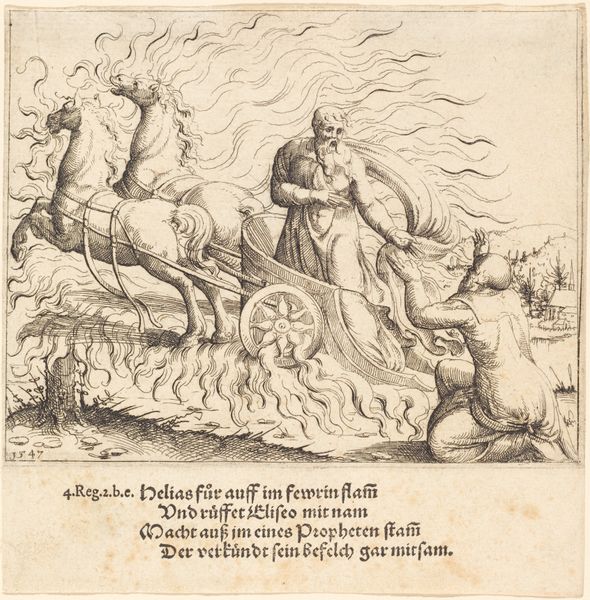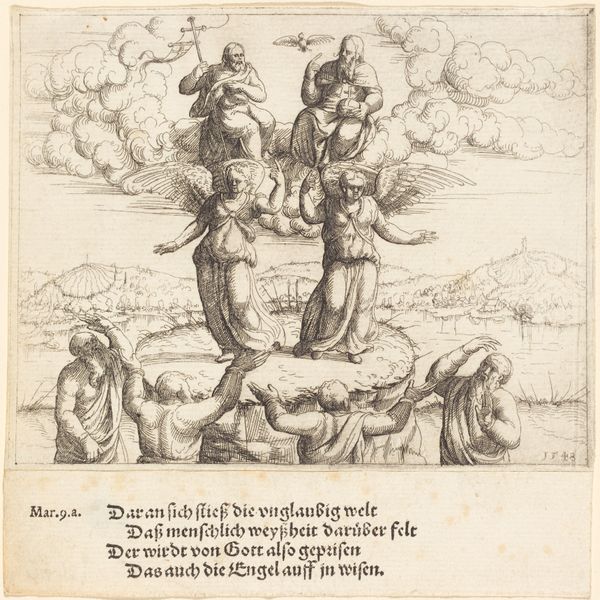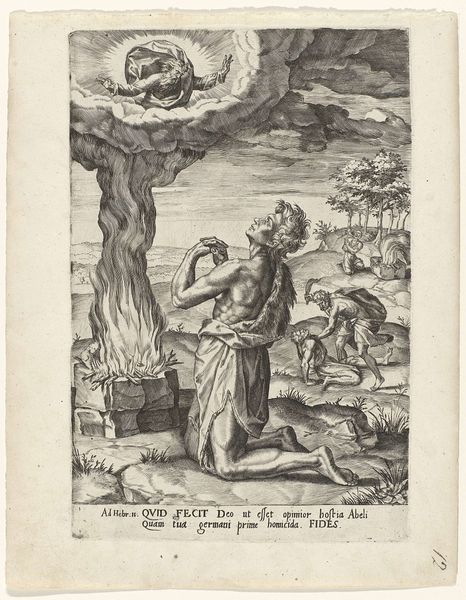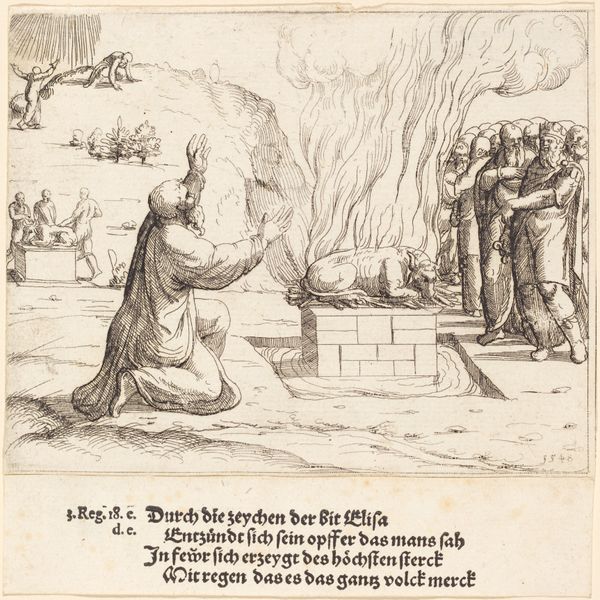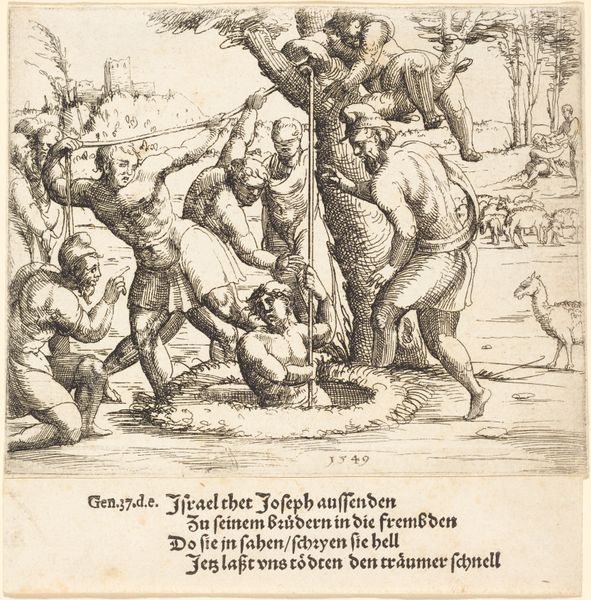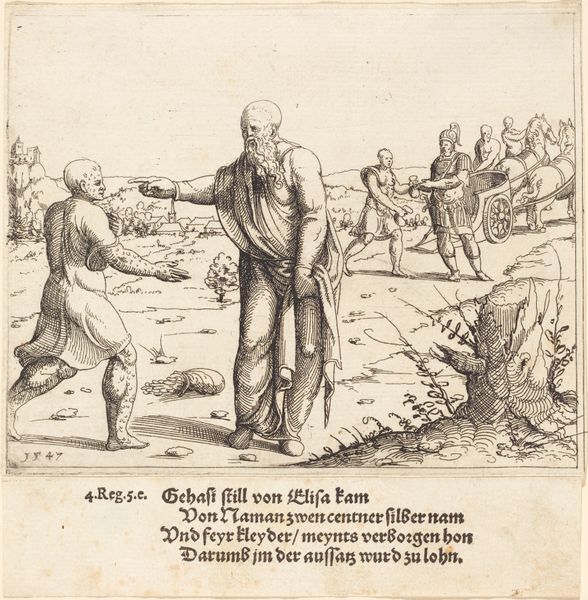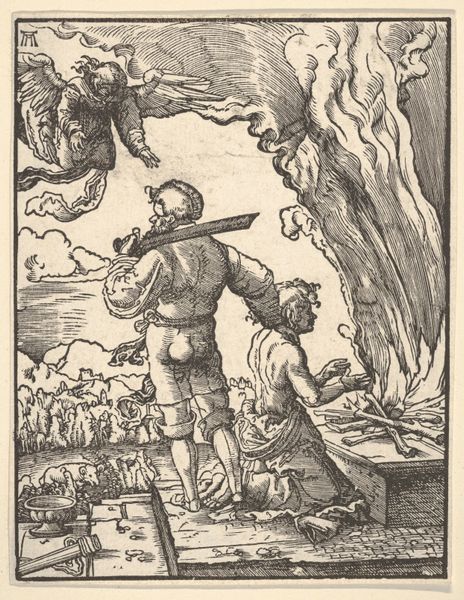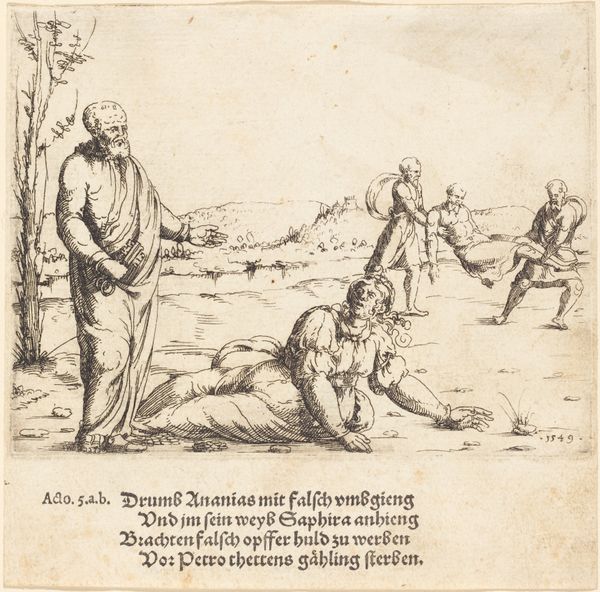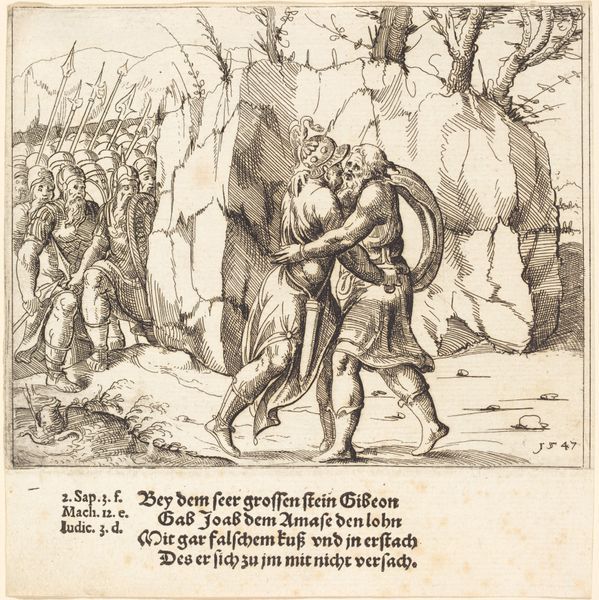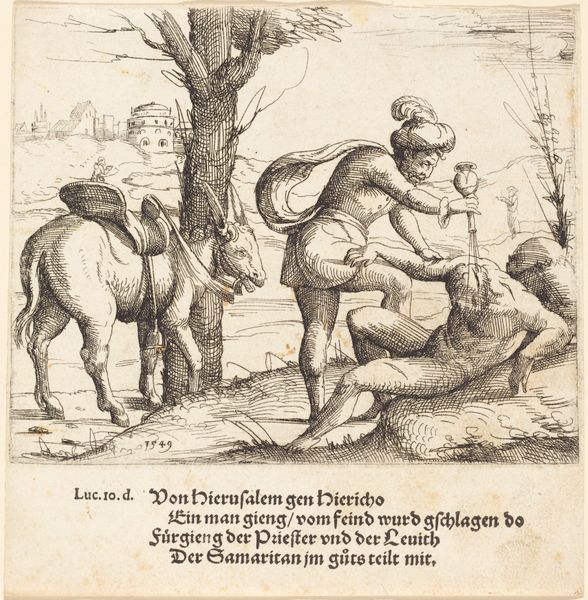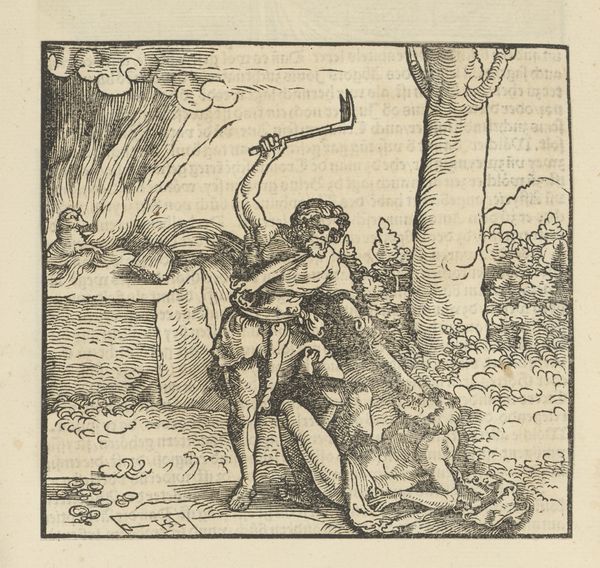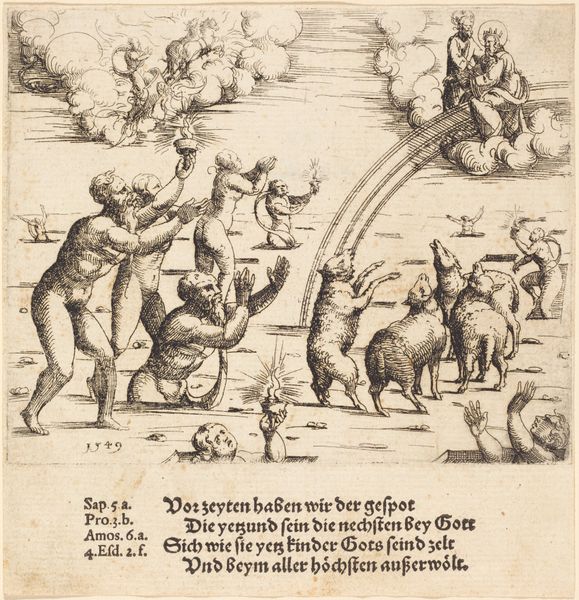
drawing, print, engraving
#
drawing
# print
#
figuration
#
11_renaissance
#
line
#
history-painting
#
engraving
Copyright: National Gallery of Art: CC0 1.0
Editor: This is "Moses and the Serpent," an engraving by Augustin Hirschvogel from 1548. The lines are so delicate, yet they depict such a powerful scene: God appearing to Moses, whose staff has turned into a serpent. How do you interpret this work in the context of its time? Curator: It's a potent image deeply rooted in the religious and political climate of the Reformation. Consider how the printing press made such biblical scenes accessible to a wider audience, circumventing the traditional authority of the Church. Notice how the composition pits a dynamically rendered Moses, complete with serpent, against God in the burning bush. How might that direct comparison have been read at the time? Editor: It almost feels like a challenge to the established order, like Hirschvogel is empowering the individual's interpretation of scripture. The artist depicts both figures as commanding presences. Is it just me, or does that flattening give them both the same visual status? Curator: Exactly. And that democratization of religious imagery aligns with the broader Reformation emphasis on individual faith and the rejection of intermediaries. Moreover, this print participates in the visual rhetoric of the period. It subtly positions the viewer to consider their own role in the unfolding religious drama, and also, possibly, the rising power of printed materials that were widely distrusted in some cultural circles. What message might that send? Editor: Wow, I hadn’t thought about how the very act of printing and distributing this image contributes to its meaning. The way it empowers both Moses, the individual, and potentially, also, its contemporary viewer. Curator: Indeed. It’s a fascinating example of how art became a powerful tool in shaping public opinion during a time of great social and religious upheaval.
Comments
No comments
Be the first to comment and join the conversation on the ultimate creative platform.
